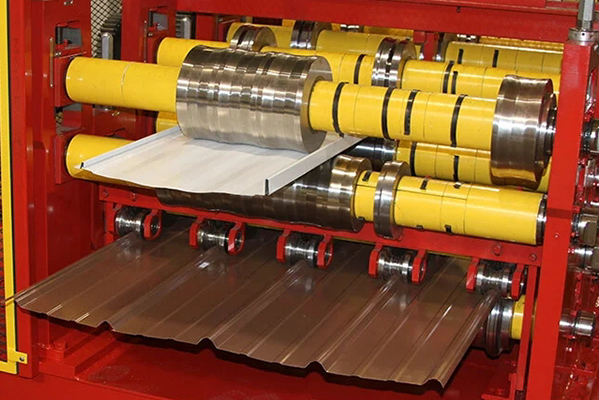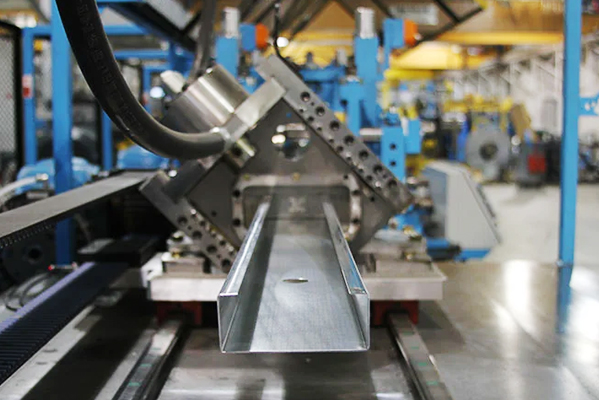Navigation Menu
Contact Us
- Email:
- info@wxavatar.com
- Address:
- Yurong Village, Yuqi Street, Huishan District, Wuxi, China.
Release Date:Jul 25, 2025 Visit:40 Source:Roll Forming Machine Factory
Roll forming machines are essential in metal fabrication industries, known for their efficiency in shaping long metal strips into precise profiles. To ensure consistent performance and avoid unexpected downtime, proper maintenance is crucial. This article explores practical steps and best practices for maintaining a roll forming machine to keep it operating smoothly over time.

1. Daily Inspection and Cleaning
One of the simplest yet most effective maintenance routines is conducting daily checks and cleaning:
Remove metal debris and dust from rollers, cutting blades, and conveyor sections after each shift.
Check for oil leaks or signs of wear in moving parts such as bearings and chains.
Inspect the rollers for surface damage, which can lead to imperfections in the finished product.
Regular cleaning prevents buildup that could affect the accuracy and smoothness of the forming process.
2. Lubrication of Moving Parts
Friction between moving parts can lead to premature wear. Proper lubrication ensures smooth operation and extends the lifespan of components:
Use manufacturer-recommended lubricants for chains, gears, and bearings.
Create a lubrication schedule based on operating hours, not just time intervals.
Avoid over-lubrication, which can attract dust and create sticky residue.
Consistent lubrication helps reduce mechanical stress and heat generation during high-speed runs.
3. Check and Adjust Roller Alignment
Misaligned rollers can result in off-spec profiles and material damage:
Use calibrated measuring tools to verify roller spacing and alignment.
Adjust rollers incrementally and symmetrically to prevent uneven stress.
If profiles start to show deviations, inspect the full roller sequence for alignment issues.
Maintaining proper roller alignment ensures consistent product quality.
4. Monitor Electrical and Hydraulic Systems
Roll forming machines rely heavily on electrical drives and hydraulic systems:
Inspect wiring, sensors, and control panels regularly for signs of wear or overheating.
Test emergency stop systems to ensure safety compliance.
For hydraulic systems, check fluid levels and look for leaks or unusual pressure fluctuations.
Preventive checks reduce the risk of electrical faults or hydraulic failures.
5. Keep Tooling in Optimal Condition
The condition of cutting dies and forming tools directly affects product output:
Sharpen cutting blades or replace them as needed to maintain clean cuts.
Inspect tooling surfaces for cracks or deformation.
Store tooling properly when not in use to prevent corrosion or accidental damage.
Routine maintenance of tooling improves efficiency and reduces waste.
6. Document and Schedule Maintenance Tasks
Having a structured maintenance log helps anticipate issues and plan downtime:
Record all inspections, part replacements, and oil changes.
Schedule monthly, quarterly, and annual maintenance based on machine usage.
Use checklists to ensure no key component is overlooked during maintenance sessions.
Proper documentation ensures accountability and supports long-term operational planning.
7. Train Operators on Preventive Practices
Operator awareness plays a big role in machine longevity:
Offer basic maintenance training to machine operators.
Encourage operators to report unusual noises, vibrations, or speed variations immediately.
Make preventive maintenance a shared responsibility across teams.
Trained staff can often identify issues early and help minimize potential downtime.

Conclusion
Maintaining a roll forming machine involves more than just occasional servicing—it requires a combination of regular inspection, precise alignment, proper lubrication, and trained personnel. By following a structured maintenance routine, businesses can improve machine reliability, reduce production errors, and extend equipment life. Taking proactive steps today ensures smoother operations and better performance for future production needs.